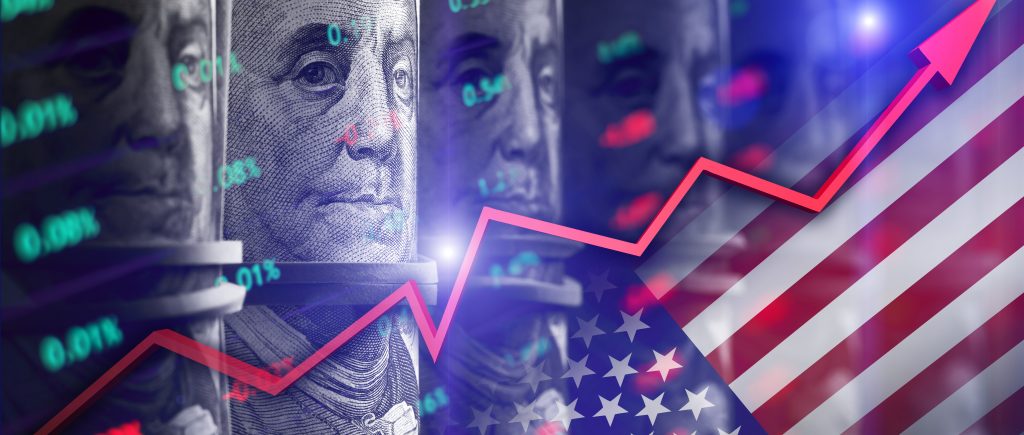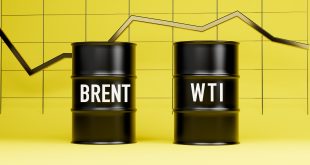U.S. stocks saw a slight rise on Friday as investors digested positive second-quarter earnings reports and signs of a resilient economy, despite lingering tariff uncertainties.
By 09:32 ET (13:32 GMT), the Dow Jones Industrial Average gained 85 points or 0.2%, the S&P 500 index rose 12 points or 0.2%, and the NASDAQ Composite climbed 78 points or 0.4%.
Market Boosted by Corporate Earnings and Strong Retail Data
The major indices were on track for a positive week, bolstered by strong corporate earnings and robust retail sales data, which underscored the resilience of the U.S. economy.
American Express (NYSE:AXP) saw a rise in stock after surpassing second-quarter profit estimates, driven by resilient spending from affluent cardholders. 3M Company (NYSE:MMM) also gained following an increase in its full-year profit forecast, fueled by cost-cutting measures and a focus on high-margin products. Similarly, Charles Schwab (NYSE:SCHW) saw positive stock movement after reporting strong second-quarter earnings, supported by growth in client assets and improved interest margins.
Netflix (NASDAQ:NFLX) reported solid quarterly earnings and raised its annual revenue guidance, though its stock slipped after failing to meet heightened analyst expectations. Despite this, Netflix’s stock has surged by over 43% this year, as the firm continues to strengthen its position in the streaming industry.
Anticipation of More Earnings Reports
The earnings season continues, with Coca-Cola (NYSE:KO), Texas Instruments (NASDAQ:TXN), Alphabet (NASDAQ:GOOGL), and Tesla (NASDAQ:TSLA) set to report next week, which could provide further insights into corporate performance and the broader market trends.
Focus on Consumer Sentiment and Inflation Data
On the economic calendar, investors are looking forward to the University of Michigan’s Consumer Sentiment Index for July, which is expected to show a modest increase. Additionally, inflation expectations are expected to remain relatively stable, despite the impact of tariffs on some goods.
This follows stronger-than-expected retail sales and jobless claims data this week, which painted a picture of a solid economy for now. However, inflation remains a concern, with tariffs continuing to push up the prices of certain goods.
Fed’s Wait-and-See Approach Amid Growing Risks
The Federal Reserve has largely adopted a “wait-and-see” stance regarding interest rate decisions. Fed Governor Christopher Waller remarked that a rate cut as soon as the next meeting in July might be justified, citing rising risks to the economy. While the uptick in inflation from tariffs is expected to be temporary, the Fed faces growing pressure from President Trump to cut borrowing costs swiftly to support the economy.
Crude Prices Surge Amid Supply Concerns and Russian Sanctions
In the commodities market, oil prices rose on Friday, driven by concerns over supply disruptions and new sanctions on Russia. Brent futures climbed 1% to $70.22 a barrel, while West Texas Intermediate (WTI) crude futures rose 1.2% to $68.36 a barrel.
The surge in prices was spurred by drone attacks on oil fields in Iraqi Kurdistan, which have shut down half of the region’s output, exacerbating concerns about oil supply. Additionally, the European Union (EU) reached an agreement on a new sanctions package against Russia, including a lower oil price cap to limit Russia’s oil revenues while maintaining its oil supplies in the market to avoid a global shortage.
As the earnings season continues and geopolitical concerns persist, investors will be closely monitoring both corporate performance and macroeconomic indicators for signals about future economic growth and inflationary pressures. The ongoing tariff issues, coupled with potential interest rate cuts, will remain key focal points for both the stock and commodity markets.
Trump’s proposed 15-20% blanket tariffs on most trading partners, up from the current 10%, raise fears of rising consumer prices. Despite Trump’s dismissal of inflation risks, citing Thursday’s market highs, higher tariffs could increase costs for imported goods, challenging the Federal Reserve’s price stability efforts. The steady US inflation rate of 2.35% in May and core inflation at 2.79% suggest a delicate balance that could be disrupted by supply chain shocks.
Sector-Specific Performance
While US stocks faced broad pressure, some sectors showed resilience. Levi Strauss shares rose 10% after exceeding Q2 expectations and raising its full-year outlook, planning to absorb tariff costs. Energy stocks, like BP, gained 2% in premarket trading despite warnings of Q2 impairments due to lower fuel prices. Technology and crypto-related stocks, buoyed by Bitcoin’s surge to $118,000, also held firm, with Coinbase and MicroStrategy up 1.3% and 3%, respectively.
US-Canada Trade Tensions
The 35% tariff on Canada, with threats of further increases if Canada retaliates, strains the U.S.-Mexico-Canada Agreement (USMCA). Exemptions for USMCA-compliant goods offer temporary relief, but their permanence is uncertain. Canadian Prime Minister Mark Carney emphasized cooperation on fentanyl and trade, aiming for a deal by August 1.
Global Trade Dynamics
Trump’s tariff strategy extends to potential duties on the European Union, India, and Vietnam, which was surprised by a 20% tariff announcement. The EU is nearing a trade deal outline, awaiting US response. These moves signal a protectionist shift, potentially disrupting global supply chains and trade balances.
As US stocks navigate Q2 earnings and upcoming inflation data, tariff-induced volatility is likely to persist. Policymakers should closely monitor inflation indicators, as tariff-driven price hikes could complicate monetary policy. Businesses may adopt cost-absorption or supply chain diversification strategies, as seen with Levi Strauss. Investors are now focusing on resilient sectors like technology, defense (e.g., AeroVironment up 9.5%), and precious metals to weather trade uncertainties.
 Noor Trends News, Technical Analysis, Educational Tools and Recommendations
Noor Trends News, Technical Analysis, Educational Tools and Recommendations





